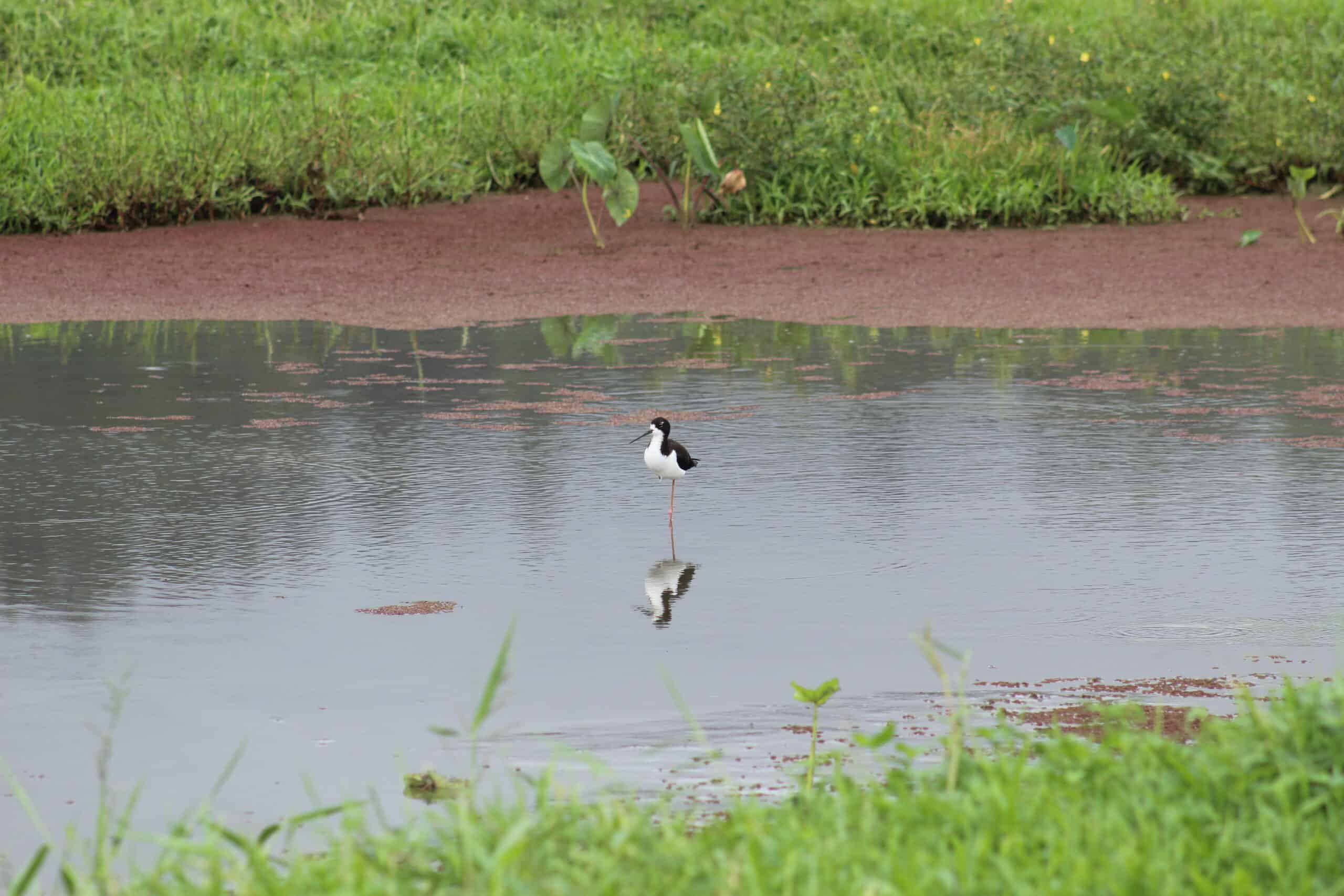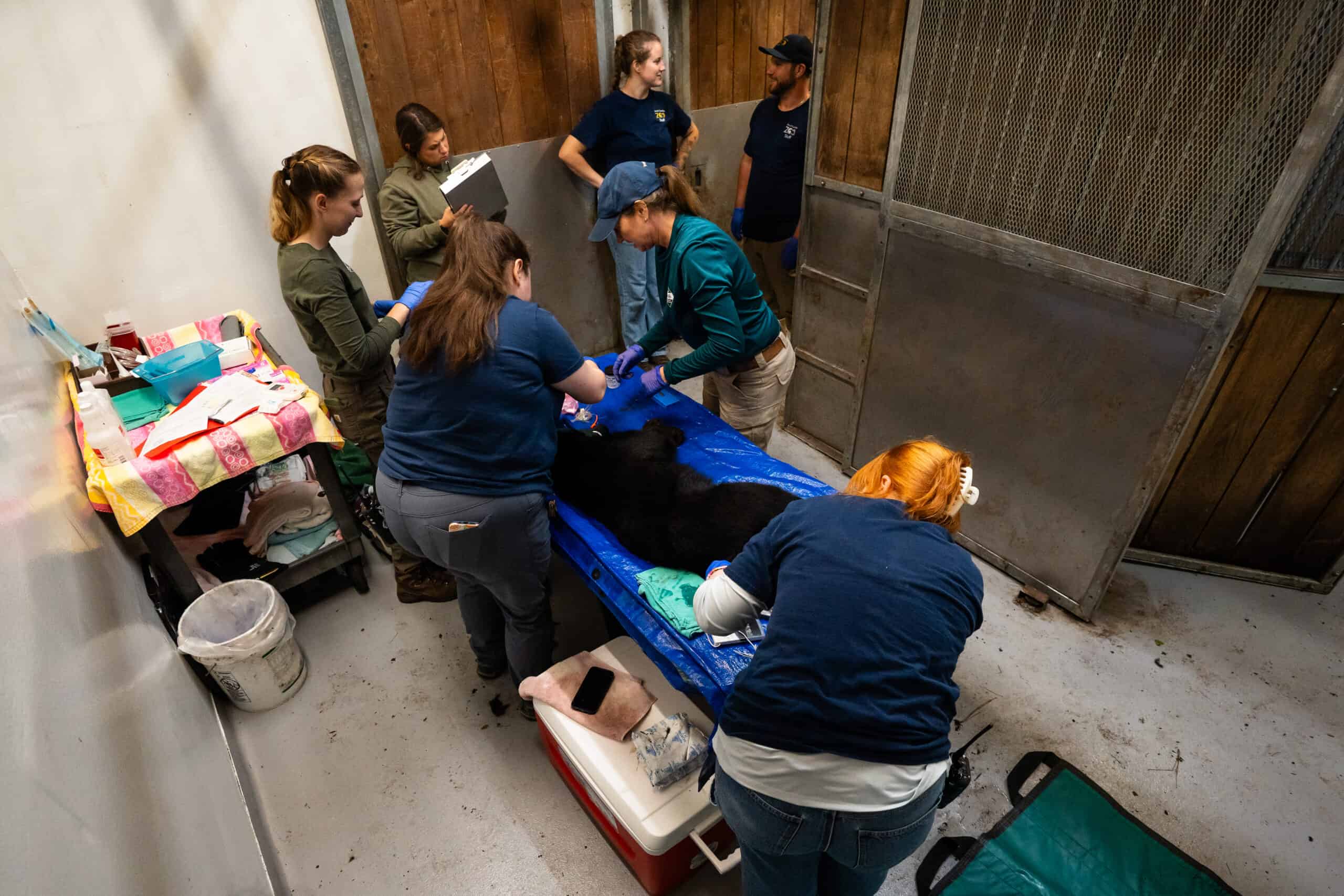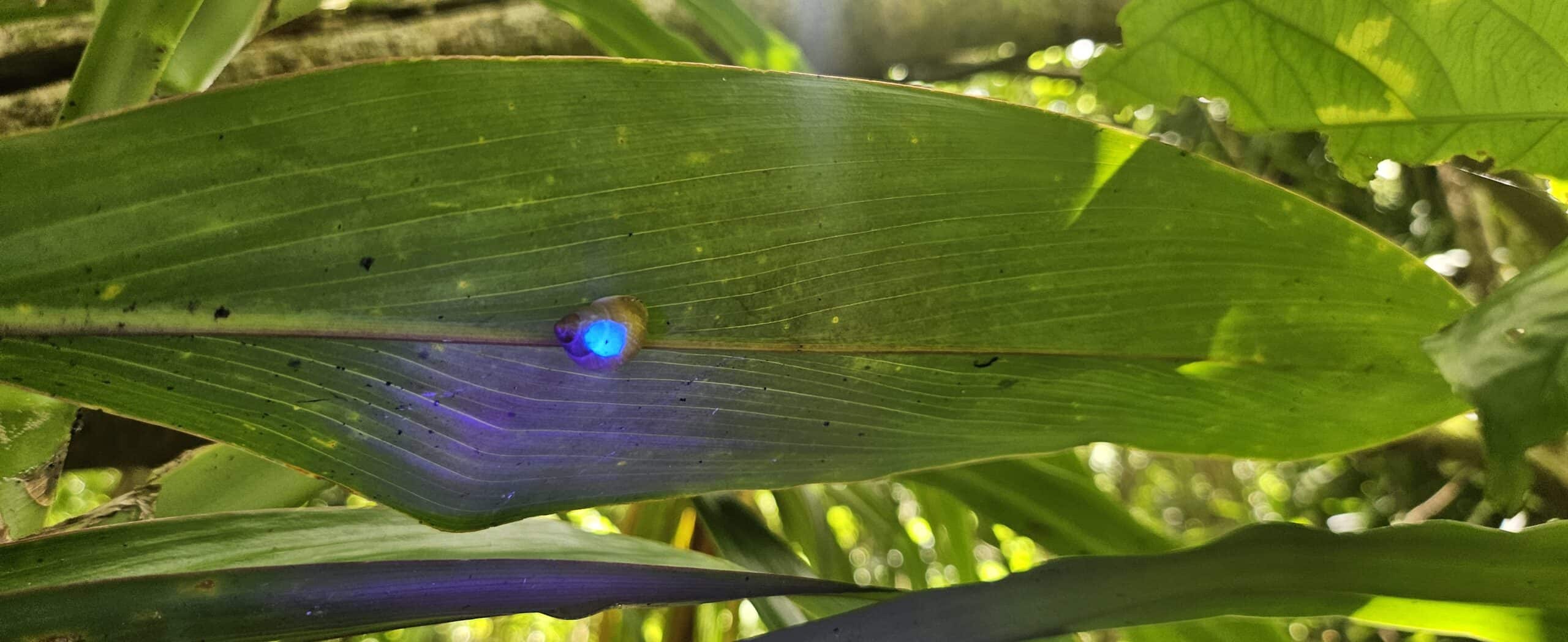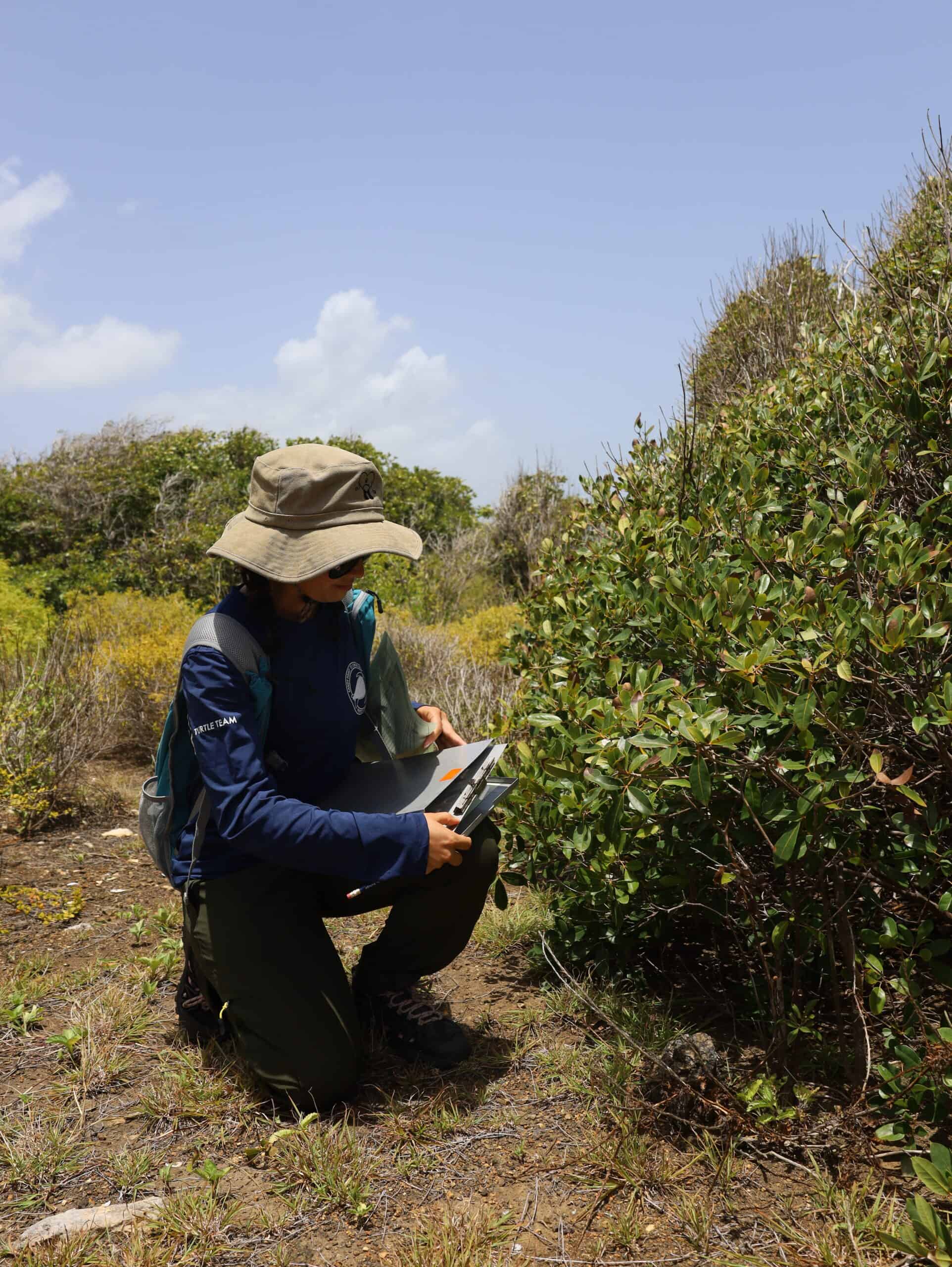Share this article
Wildlife Featured in this article
- Hawaiian stilt
- Hawaiian short-eared owl
- Barn owl
- Indian Mongoose
- Short-eared owl
Endangered owls prey on endangered Hawaiian stilts
Researchers have observed pueo attacking shorebirds in several cases
It was June 2021, and researchers were trying to capture a pueo to fit it with a GPS tracking device as part of a larger effort to learn more about the owls’ movements around Hawaii.
They set up a net trap with a decoy owl during mating season and used a speaker to play the squeaks of a male pueo. The charade worked, and another adult female pueo was soon lured into the net, likely in an effort to lunge at the potential invader.
“The pueo heard the call, came, saw the fake owl, and ‘Vroom!’ attacked the fake owl,” said Marie-Sophie Garcia-Heras, who was working as a postdoctoral researcher studying the owls at the time with The Pueo Project, a program led by Melissa Price at the University of Hawaii at Manoa.
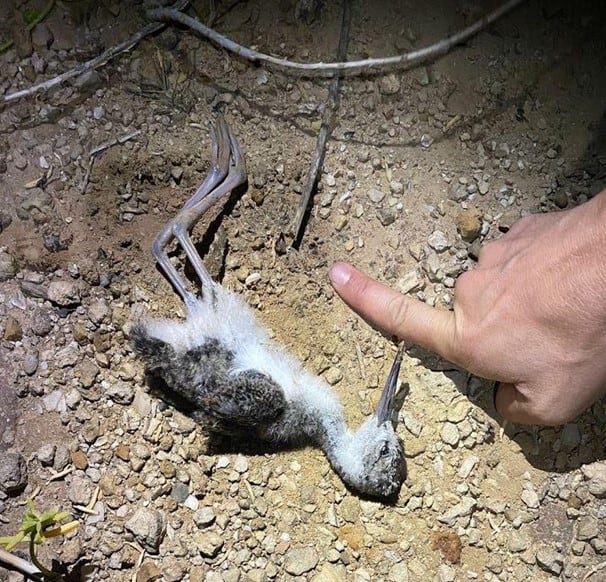
Only the trap didn’t work—a gust of wind made the net collapse just as the female was flying in. The bird escaped, much to the consternation of Garcia-Heras and her colleagues. They went to fix the trap, and to their surprise, they found the still-warm body of a dead ae’o chick, also known as a Hawaiian stilt, laying on the ground at the bottom of the net. The owl must have just captured the prey, then dropped it during the bungled capture.
Pueo project researchers weren’t entirely shocked by this finding. As described in a research note published recently in Ecology and Evolution, the researchers had witnessed a few similar cases since 2019 of pueo preying on Hawaiian stilts. It just wasn’t until now that they had cold evidence—a warm body—in their hands.

A tale of two endangered birds
The U.S. Fish and Wildlife Service lists Hawaiian stilts as endangered. The shorebirds have drastically declined due to decades of habitat loss and fragmentation. Invasive species like feral cats (Felis catus), dogs (Canis familiaris) and mongoose (Herpestes edwardsii) also prey on Hawaiian stilts.
Pueo, also known as Hawaiian short-eared owls (Asio flammeus sandwichensis), are a subspecies of short-eared owls (Asio flammeus) endemic to Hawaii. These owls are a little more generalist than their mainland U.S. counterparts, which mostly stick to grasslands. In Hawaii, pueo can occupy wetlands and forested areas as well as grasslands. These birds are also threatened by habitat loss and fragmentation, especially on Oahu, where the state of Hawaii lists them as endangered. Researchers don’t have numbers, but they suspect populations have dropped as human activity has increased in Oahu.
In ongoing research, scientists are trying to determine whether the numbers in Oahu are really dropping or whether these birds are just migrating between the islands of the archipelago—Garcia-Heras said they have been tracked flying between islands.
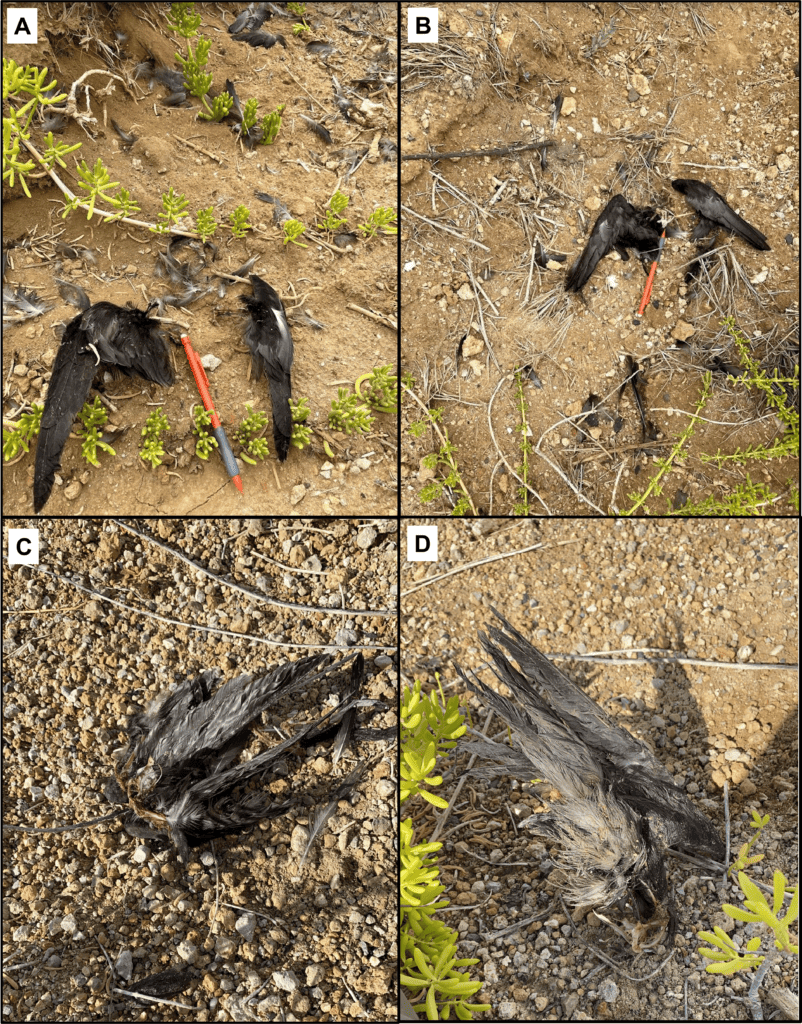
Mounting evidence
It was in the midst of their Hawaiian stilt research that scientists first saw evidence that these owls may be preying on the shorebirds. They had set up a trail camera up near a stilt nest on Oahu—the birds typically lay their eggs on round bits of mud they form on the ground.
In 2019, the cameras captured footage of pueo activity around a nest at night. The trouble was that they couldn’t tell for sure whether the raptor had taken a chick from the footage. But the adults were absent—perhaps having fled the pueo to save their own skin.
In 2020, researchers conducting nest surveys of stilts witnessed a pueo chasing adult stilts around. While they didn’t see the outcome, they later flushed a pueo from a ground roost that contained long stilt leg bones. Garcia-Heras said the researchers also “found that stilts were very anxious when pueo were around.”
In June and July 2021, in the weeks following the event where the researchers were left with a freshly killed stilt chick in their net, researchers discovered the carcasses of 10 adult ae’o strewn about an area near where a family of five pueo had been observed. These carcasses were picked clean, leaving mostly wings and bones. Garcia-Heras said these kinds of remains are typical from raptor feedings rather than other kinds of carnivores, which might have chewed the bones more.

Pueo are the only raptors on Oahu other than invasive barn owls (Tyto alba). The latter typically prey on small mammals, though, Garcia-Heras said, and all the other circumstantial evidence points to the nearby pueo family.
While stilts are taller than pueo, the ae’o are all legs—pueo typically weigh about 290-340 grams versus the stilts’ 180 grams.
“The timing, the location just very much correspond to a pueo predation event,” Garcia-Heras said.
Given the conservation status of the pueo, many management actions, like removing the pueo, aren’t plausible. Plus, Garcia-Heras said that pueo have a high importance in Hawaiian culture as protective guardians.
Both of these birds are native and endemic to the islands, so predation is likely natural between the species. But researchers hadn’t previously considered pueo predation as a potential factor affecting stilt numbers.
“It could be a problem if there’s one bird that starts hitting the Hawaiian stilt population,” Garcia-Heras said.
Header Image: The Hawaiian stilt, or ae’o, is considered endangered by the U.S. Fish and Wildlife Service. Credit: Melissa Price



